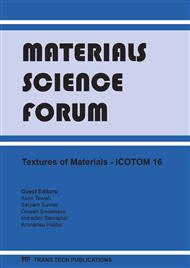p.627
p.631
p.635
p.639
p.643
p.647
p.651
p.655
p.659
An EBSD Study of Texture Variation along Pilger Reduced Titanium Alloy Tubes
Abstract:
This study investigates the changes in radial micro-texture via Kearn’s f-factors during single cold pilger reduction of a titanium Ti-3-2.5 alloy as a result of strain path changes from tooling modifications. EBSD results confirm that the texture intensity as well as the radial f-factors can be increased by modifications of pilgering tooling. In addition a switch between the secondary prism planes which lie normal to the pilger direction in the starting tube to primary prism planes after pilgering has been observed.
Info:
Periodical:
Pages:
643-646
Citation:
Online since:
December 2011
Keywords:
Price:
Сopyright:
© 2012 Trans Tech Publications Ltd. All Rights Reserved
Share:
Citation:


